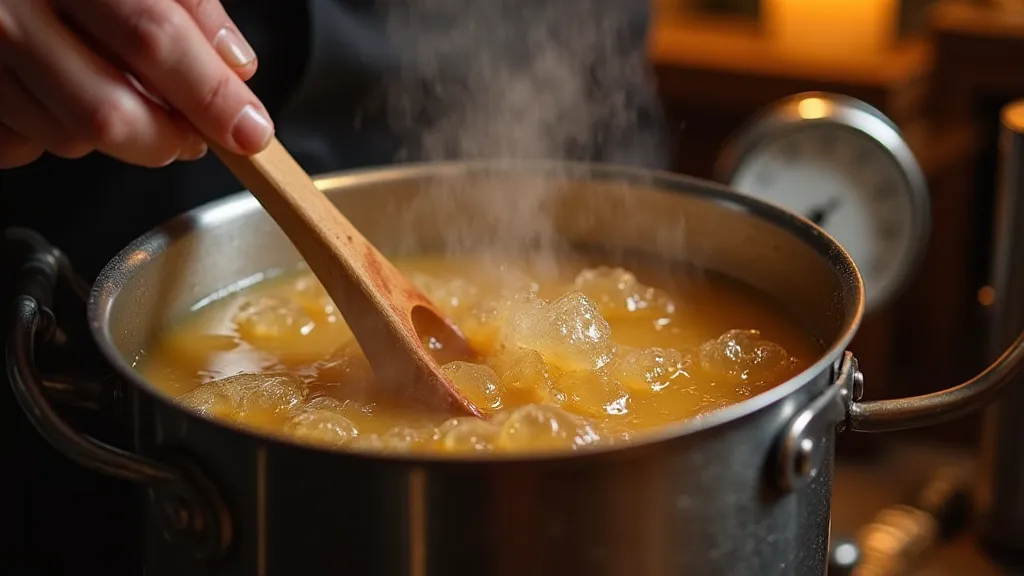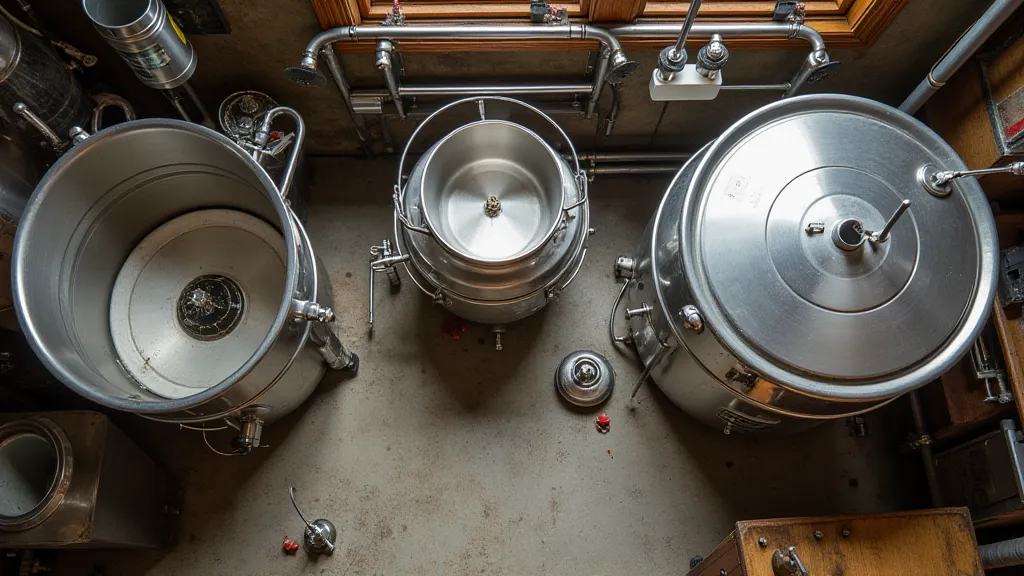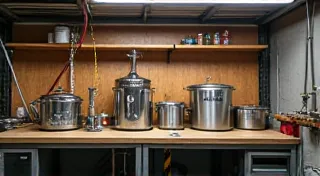The Ultimate Guide to Choosing Your First Home Brewing Kit
So, you’re bitten by the brewing bug! That’s fantastic! But staring at the seemingly endless options for home brewing equipment can be daunting. Where do you even begin? This guide breaks down the different types of home brewing kits available, covering extract, partial mash, and all-grain systems. We’ll help you understand what each offers and find the perfect kit to match your budget and experience level.
Understanding the Different Brewing Methods
Home brewing isn't a one-size-fits-all activity. Different methods offer varying degrees of complexity and control over the final product. Let's break them down:
Extract Brewing: The Beginner-Friendly Option

Extract brewing is the most popular choice for beginners. It simplifies the process by using pre-made malt extract, which is essentially concentrated wort. This skips the malting and mashing stages, saving time and effort. Kits typically include the extract, hops, yeast, and instructions. It's a great way to get familiar with the brewing process without the complexity of grain handling. Before you dive in, it's important to understand what equipment you'll need. If you’re still figuring out the basics, take a look at our Essential Brewing Equipment: A Comprehensive Guide for a detailed overview of the necessary tools.
- Pros: Easy, fast, requires less equipment, consistent results.
- Cons: Less control over the beer's flavor profile.
Partial Mash Brewing: A Step Up in Control
Partial mash brewing bridges the gap between extract and all-grain. It involves using some grains in addition to malt extract. This allows you to introduce more complex flavors and aromas into your beer. It's a bit more involved than extract brewing, but still relatively beginner-friendly. As you start to experiment with grains, it's worth considering how your choices will impact the final product, and what styles you might try first. If you are unsure where to begin, be sure to check out our Top 5 Beginner-Friendly Beer Recipes for some great starting points.
- Pros: More control over flavor, slightly more complexity, still relatively simple.
- Cons: Requires a little more equipment and understanding.
All-Grain Brewing: The Advanced Approach

All-grain brewing is the most advanced method, involving the entire process from grains to beer. It offers the most control over every aspect of the beer’s flavor and character. However, it also requires the most equipment and a deeper understanding of the brewing process. It's generally recommended for brewers who have some experience with extract or partial mash brewing. The learning curve can be steep, and occasional issues are almost inevitable. If you encounter problems along the way, our guide to Troubleshooting Common Home Brewing Problems can offer valuable solutions and insights.
- Pros: Maximum control over flavor, allows for experimentation, most rewarding process.
- Cons: Most complex, requires most equipment, steeper learning curve.
What to Look for in a Home Brewing Kit
Once you’re decided on your brewing method, consider the following when choosing a kit:
- Recipe Selection: Does the kit offer recipes you're excited to brew? A good kit will include multiple recipes.
- Equipment Quality: Look for stainless steel equipment whenever possible. It’s more durable and easier to clean.
- Instructions: Clear and concise instructions are crucial, especially for beginners.
- Customer Reviews: See what other brewers have to say about the kit.
- Budget: Kits range in price, so set a budget and stick to it.
Kit Recommendations Based on Experience Level
Here’s a quick guide to choosing a kit based on your experience:
- Beginner: Choose an extract brewing kit. Look for kits that include all the necessary ingredients and equipment.
- Intermediate: Consider a partial mash kit to start experimenting with grain.
- Advanced: Invest in a comprehensive all-grain kit with a variety of equipment.
Beyond beer, many brewers enjoy exploring other fermented beverages. If you're curious about expanding your repertoire, consider trying your hand at brewing cider. The process shares some similarities with beer brewing, but offers a completely different flavor profile. We have a comprehensive guide on Brewing Cider: From Apples to Delicious Beverage, so you can learn the ropes and create your own crisp and refreshing cider.
Choosing the right kit isn’t just about the brewing method, it’s also about embracing the learning process. Every batch you brew is an opportunity to refine your technique and deepen your understanding of fermentation. Don't be afraid to experiment with different ingredients and approaches – that’s where the real fun begins! For more advanced brewers, perfecting your all-grain process involves a deeper understanding of mash pH, sparging techniques, and fermentation temperature control. These seemingly small adjustments can significantly impact the final taste and aroma of your beer. Some brewers also choose to build their own brewing systems, customizing them to their specific needs and preferences.
Remember that consistency is key to brewing great beer. Paying attention to details like water quality, sanitation, and temperature control can make a big difference in the final product. A small investment in a good quality thermometer and pH meter can go a long way in ensuring that your brews are consistently delicious. Furthermore, be sure to always sanitize your equipment thoroughly to prevent unwanted bacteria and wild yeast from spoiling your batch. It’s a crucial step that many beginners overlook, but it can be the difference between a delicious brew and a sour disaster. The journey into homebrewing is an enjoyable one, and often better when shared! Consider joining a local homebrewing club to share your experiences, learn from others, and expand your knowledge.

Conclusion
Choosing your first home brewing kit can feel overwhelming, but it’s an exciting first step in a rewarding hobby! Take your time, do your research, and choose a kit that matches your experience level and brewing goals. Cheers to your brewing adventure!





